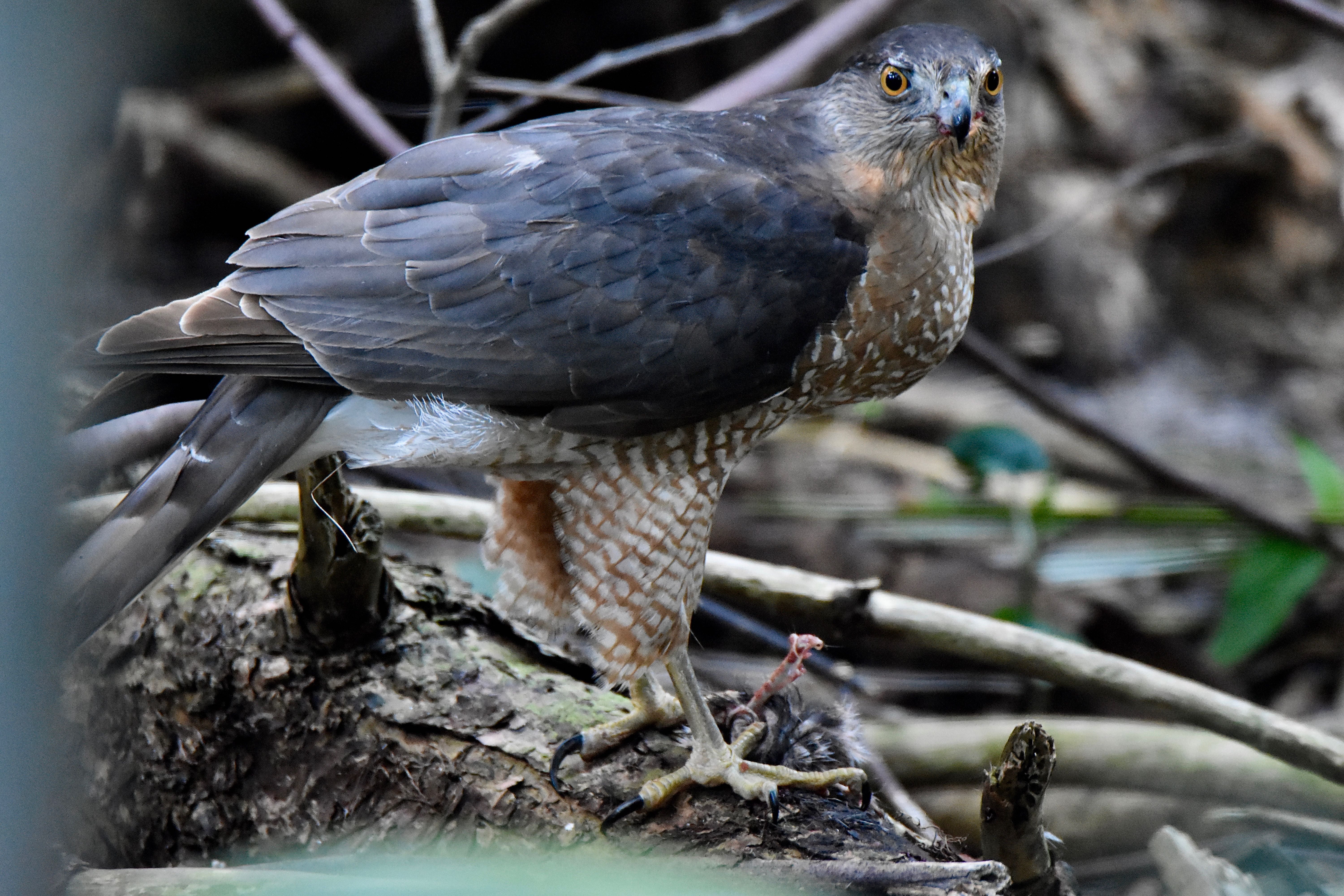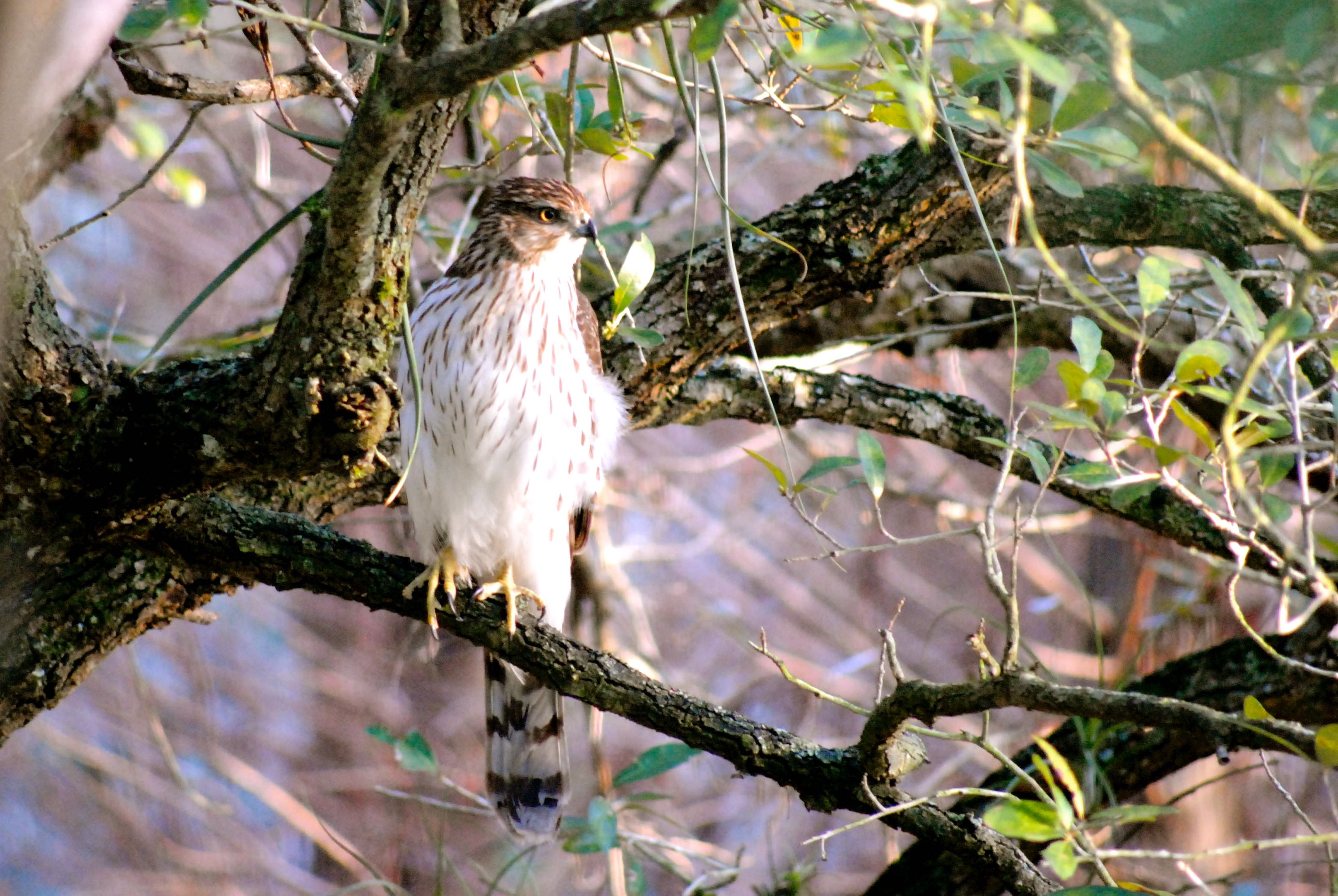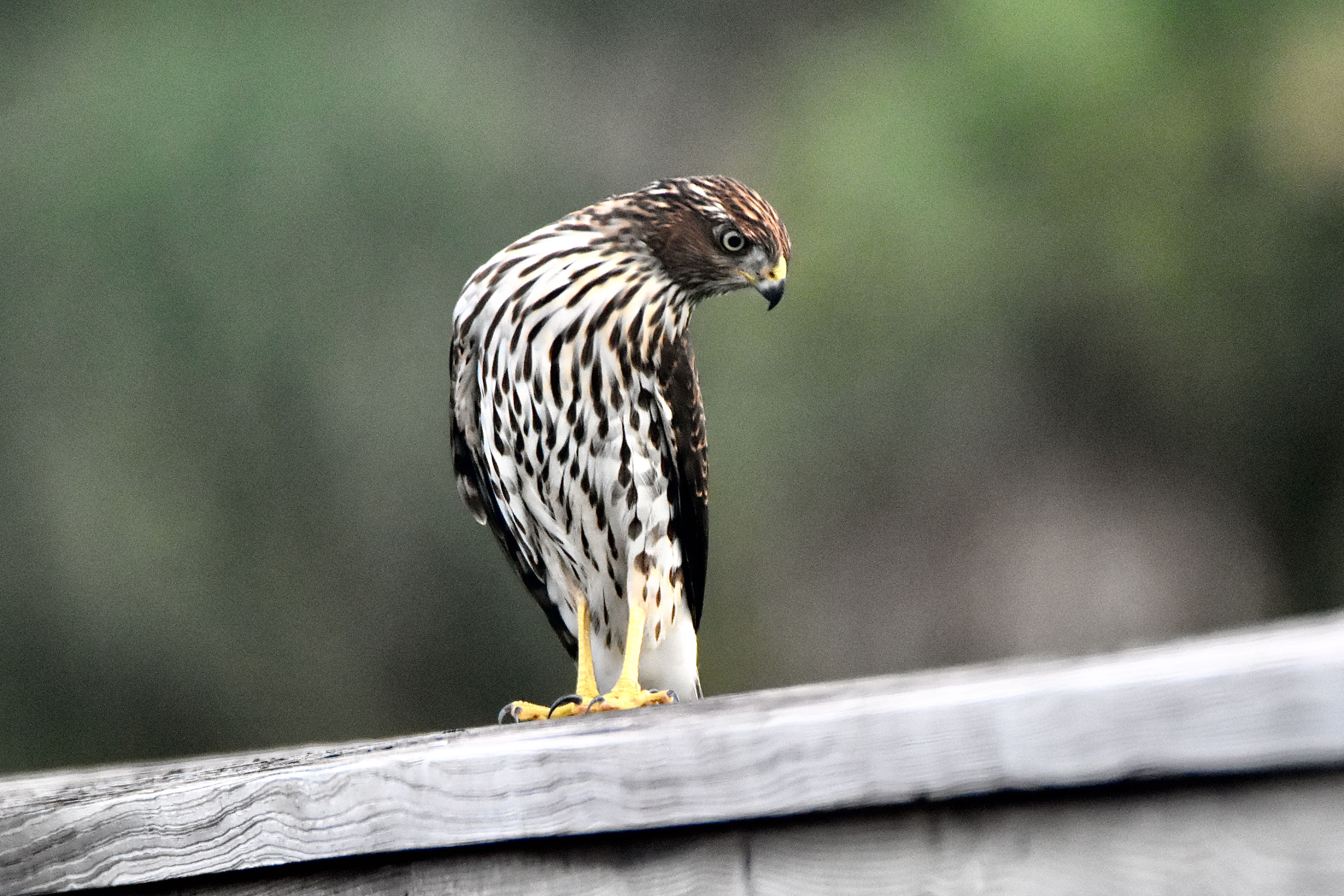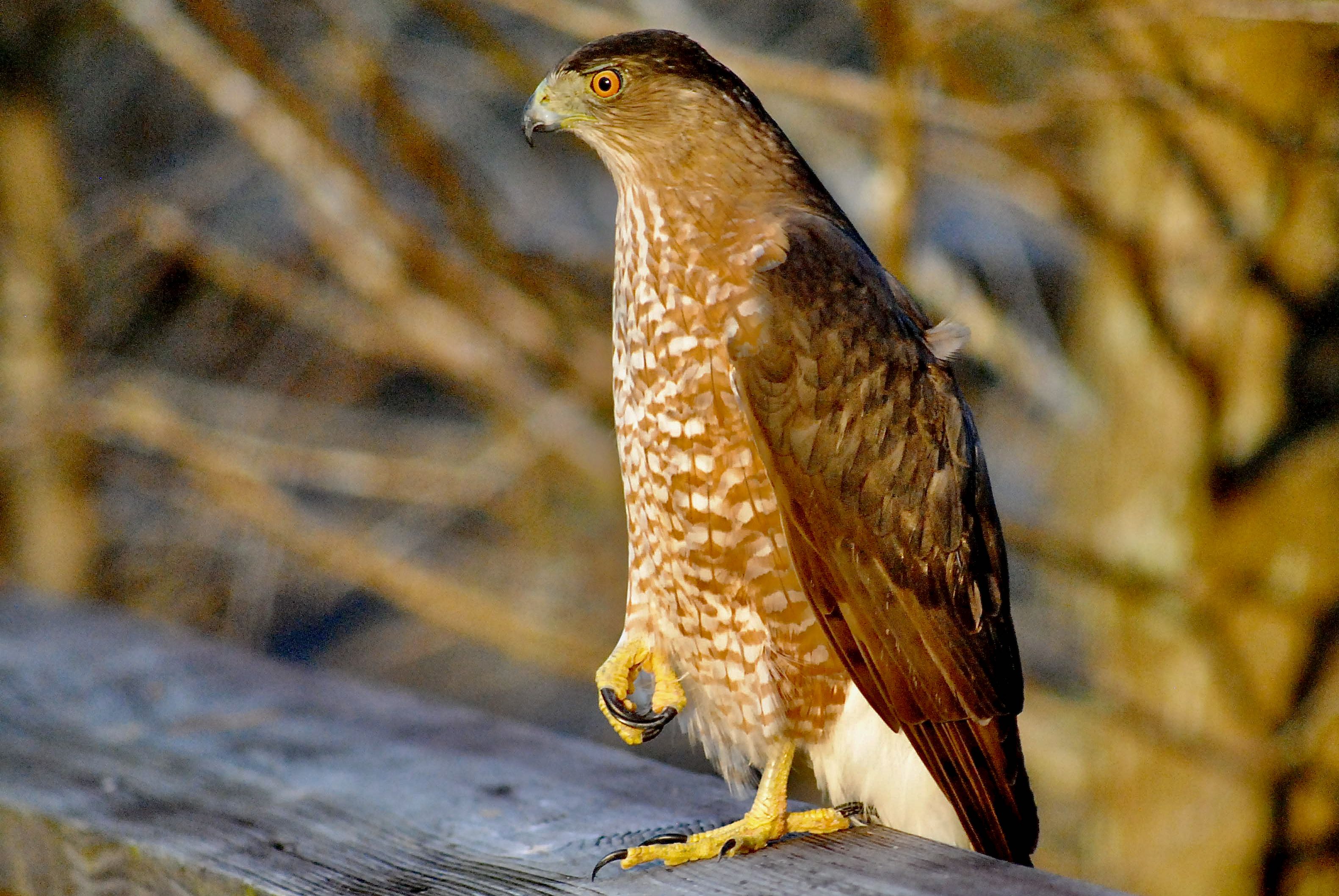
Cooper's hawk, photographed at Green Cay Nature Center, Boynton Beach, Palm Beach County, in December 2018.
Life ain't always easy for the cooper's hawk, Accipiter cooperii. This denizen of the forest sits at the top of the food chain. It is among the most skillful of flyers, but chasing prey through the woods can be a dangerous occupation. According to the Cornell Laboratory of Ornithology, a study of 300 cooper's hawk skeletons found nearly a quarter had evidence of bone fractures.
Cooper's hawks are a winter visitors to South Florida, but the Sunshine State also has a year-round population through the Panhandle and down the Peninsula to just north of Lake Okeechobee. The broader range for Cooper's hawks extends into southern Canada and the northern United States. Come winter, these birds head for warmer climes like South Florida. But the rest of population, found over most of the U.S., including Florida, is nonmigratory.
Medium-sized birds are on their menu — mourning doves, starlings and pigeons are among their favorites — but they also raid nests and will dine on small mammals as well. Their method of killing: grabbing and squeezing their prey to death.
It is similar in looks to several other hawks, including the red-shouldered and especially the sharp-shinned hawk. The reddish eyes, dark "skull cap," blue-gray back and wings and long tail separate the cooper's hawk from the red-shouldered. The sharp-shinned is smaller overall, has a smaller, rounder head, a dark nape and its tail is more squared than the cooper's hawk. Cooper's also have a flattened head and the blue-gray coloring sits above the eyes, again more like a skull cap. Juvenile Cooper's hawks have yellow eyes, the rounded tail, brown vertical bars on the chest and are brown above. Cooper's hawks also have thin horizontal bars on the tail. (Sharp-shinned hawks are also winter visitors to South Florida.)
Cooper's hawks can have a body lenth of 18 inches, with a wingspan between two and three feet. Males are significantly smaller than females, which can make life a bit tricky for the guys when they have romance on their minds. They are about the size of a nice meal, so caution is advised. Also, because of the size difference, males tend to hunt for smaller prey, leaving larger targets to the females.
They nest high in trees, usually in dense woods, with pines, oaks and other hardwoods favorites sites. Males do almost all of the nest-building, typically over a couple of weeks, with the females contributing slightly. Nests are made of sticks.
Females lay between two and six eggs, which require a month to five weeks of incubation before hatching. The young remain in the nest for a month before they're ready to venture out.
Cooper's hawks are members of Accipitridae, a family of birds that include hawks, eagles, kites, harriers and some vultures.
Green Cay Nature Center



